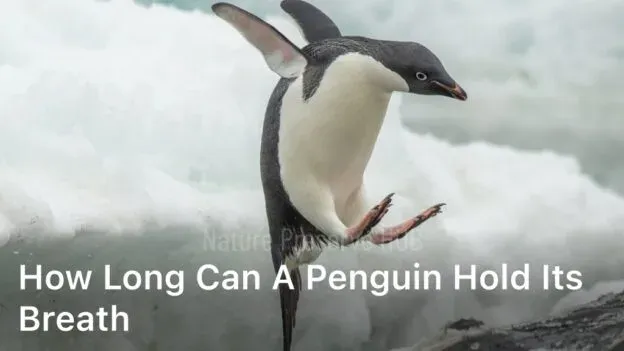Can a Hamster Eat a Strawberry? – Hamsters are small, adorable creatures that make great pets. As pet owners, it is crucial to provide our furry friends with a balanced diet to ensure their overall health and well-being. One question that has been asked time and time again is, “Can a hamster eat a strawberry?” Strawberries are a popular fruit that is often enjoyed by humans, but can hamsters safely consume them? In this article, we will explore the potential benefits and risks associated with feeding strawberries to your hamster. We will also provide guidelines on safe feeding practices and alternative fruits that can be given to your furry friend. Key Takeaways Hamsters can consume strawberries, but it should be in moderation and with caution. Strawberries contain essential vitamins, minerals, and antioxidants that can contribute to a hamster’s overall health. Feeding strawberries to your hamster can potentially pose risks such as allergies or digestive issues. It is vital to practice safe feeding practices when introducing strawberries into your hamster’s diet. Alternative fruits such as apples, bananas, and blueberries are safe for hamsters to consume. Can a Hamster Eat a Strawberry? Many people believe that hamsters are only able to eat certain types of food, but the truth is that they are actually quite versatile when it comes to their diet. While there are some things that they should not eat, there are plenty of other items that are perfectly safe for them to consume. This includes fruits and vegetables, which are an important part of a healthy diet for any animal. So, can a hamster eat a strawberry? The short answer is yes, hamsters can eat strawberries. In fact, they can eat most fruits and vegetables, as long as they are properly prepared. This means that the fruit or vegetable should be washed thoroughly and cut into small pieces so that the hamster can easily eat it. Strawberries are a great option for hamsters because they are not only tasty, but they are also packed with nutrients. They are a good source of vitamins C and K, as well as fiber and folic acid. All of these nutrients are important for a healthy hamster. So, if you are looking for a healthy and delicious treat for your hamster, strawberries are a great option! Just make sure to wash them and cut them into small pieces so that your hamster can easily eat them. Can Hamsters Eat Strawberry Leaves? The answer is yes, but it is important to know that not all types of hamsters can eat strawberry leaves. Some species of hamsters are more prone to digestive issues and can get sick from eating the leaves. The best thing to do is to research your specific type of hamster to see if they can eat strawberry leaves. There are many benefits to feeding your hamster strawberry leaves. The leaves are a good source of fiber and vitamins A and C. They can also help keep your hamster’s teeth clean and healthy. If you do decide to feed your hamster strawberry leaves, it is important to give them in moderation. Too much can cause digestive problems. It is also important to make sure the leaves are fresh and free of pesticides. Can Hamsters Eat Strawberry Seeds? Most hamsters are able to eat small amounts of strawberry without any issues. However, the seeds of the strawberry can be a problem for some hamsters. If your hamster starts to show any signs of distress after eating a strawberry, it’s best to avoid giving them any more. The main concern with feeding hamsters strawberries is the seeds. Some of the seeds can be sharp and might cause an intestinal blockage if ingested. If your hamster does eat a strawberry seed, keep an eye on them for the next few days. Watch for signs of discomfort, such as decreased activity level or appetite, excessive gas, or straining to defecate. If you notice any of these signs, contact your veterinarian right away. In general, it’s best to avoid feeding your hamster any type of fruit seed. The seeds can be hard for them to digest and may cause intestinal issues. If you want to give your hamster a special treat, give them a small piece of fresh fruit instead. Nutritional Content of Strawberries for Hamsters Strawberries are a popular fruit around the world, known for their sweet taste and vibrant red color. They are also packed with vitamins and minerals that can be beneficial for humans and hamsters alike. Here are some of the key nutritional components of strawberries: Nutrient Amount per 100g of Strawberries Fiber 2g Calcium 16mg Phosphorus 31mg Potassium 153mg Vitamin C 58.8mg Folate 24mcg As you can see, strawberries are a good source of fiber, vitamin C, and potassium. These nutrients are essential for maintaining a hamster’s overall health. Fiber can aid in digestion, while vitamin C and potassium can help boost the immune system and promote healthy organ function. However, it is important to note that due to their high sugar content, strawberries should be fed to hamsters in moderation to avoid causing health issues such as obesity or diabetes. A suitable amount would be one or two small pieces per week. It is also recommended that you thoroughly wash strawberries before feeding them to your hamster, to remove any pesticides or other contaminants that may be present on the fruit. If you are unsure about whether or not to feed strawberries to your hamster, it is always best to consult with a veterinarian who can offer specific advice based on your pet’s individual needs and health concerns. How Much Strawberry Can a Hamster Eat This is a question that many people ask, and it turns out that the answer is yes! Hamsters can safely eat strawberries as part of a healthy, balanced diet. In fact, strawberries can be a great source of vitamins and antioxidants for your furry friend. So, how much strawberry can a hamster eat? A good
How Long Can a Penguin Hold Its Breath?
naturepreservehub.com. How Long Can a Penguin Hold Its Breath – Dive into the world of penguins and discover fascinating facts, like how long can a penguin hold its breath. Unveil this aquatic secret now! Have you ever wondered how long a penguin can hold its breath underwater? These fascinating creatures have adapted to their aquatic environment and developed impressive diving abilities. How Long Can a Penguin Hold Its Breath Penguins can hold their breath for an impressive amount of time underwater. Depending on the species, they can stay submerged for anywhere between 5 and 20 minutes. In this section, we will explore the specifics of penguins’ ability to hold their breath, uncovering the adaptations that make them such skilled divers. We will learn how they breathe while submerged, the factors that affect their breath-holding capacity, and compare their abilities to other animals known for their extraordinary underwater prowess. Key Takeaways: Penguins are exceptional divers with impressive breath-holding abilities. Their physical adaptations enable them to navigate underwater with ease. Penguins breathe through specialized lungs and can conserve oxygen efficiently. Factors such as species, dive duration, and depth can affect their breath-holding capacity. Penguins hold remarkable records for dive durations and can stay underwater for extended periods. The Adaptations of Penguins for Underwater Life When it comes to aquatic animals, penguins are among the most adapted for underwater life. Their physical characteristics enable them to dive to great depths, navigate currents, and catch prey with ease. Let’s take a closer look at the adaptations that make penguins such exceptional divers. Streamlined Bodies Penguins have a streamlined body shape, which reduces drag and allows them to move efficiently through the water. Their wings are modified into flippers, which they use to “fly” underwater. Specialized Lungs The respiratory system of penguins is highly adapted for diving. They have a larger heart and more extensive blood vessels than other birds, which allow them to store more oxygen. Additionally, their lungs are more massive and can collapse under pressure to prevent nitrogen from entering the bloodstream during deep dives. Waterproof Feathers Penguins have a thick layer of feathers that are tightly packed and coated with a waterproof oil. These feathers keep penguins warm and dry while diving, as well as helping them to move through the water with increased speed and agility. Transparent Eyelids One of the most unique adaptations of penguins is their transparent eyelids. These eyelids act as goggles, allowing penguins to see underwater while protecting their eyes from saltwater. Webbed Feet Penguins have webbed feet that act as paddles, enabling them to swim with great speed and agility. These webbed feet also allow them to change direction quickly and provide stability while diving. Overall, penguins are incredibly well adapted to their underwater habitat. These adaptations have enabled them to become master divers, capable of staying submerged for long periods and hunting prey with remarkable efficiency. Understanding Penguin Breathing Mechanism Penguins are uniquely adapted to their aquatic environment. Their respiratory system has evolved to enable them to efficiently obtain oxygen while diving underwater. Let’s take a closer look at the breathing mechanism of penguins. When penguins dive, they close their nostrils and rely on their lungs. The lungs are modified to store large amounts of oxygen, enabling them to hold their breath for long periods. Additionally, they have more extensive air sacs than other birds, allowing for efficient gas exchange. While underwater, penguins decrease their heart rate and constrict blood vessels to conserve oxygen. The oxygen stored in their blood and muscles enables them to power through lengthy dives without needing to resurface for air. The impressive breath-holding abilities of penguins are also due to the hemoglobin in their blood. Hemoglobin is a protein that binds to oxygen, which is then transported throughout the body. Unlike other mammals, penguins have a unique form of hemoglobin that is better suited to diving, with a higher oxygen affinity. The respiratory system of penguins is a testament to the incredible adaptations that have helped them thrive in their aquatic environment. By closing their nostrils and using specialized lungs and hemoglobin, they can hold their breath for remarkable durations and effectively hunt for food underwater. Factors Affecting Penguin Breath-Holding Capacity Various factors influence a penguin’s ability to hold its breath while diving. Understanding these factors helps to explain the variations in dive durations among different penguin species. The Effect of Diving Depth The deeper a penguin dives, the shorter the time it can hold its breath. This is because the increased pressure at greater depths compresses the penguin’s lungs, making it more difficult for the bird to inhale or exhale. Therefore, deeper dives require penguins to surface more frequently to replenish their oxygen supply. For example, Adelie Penguins, known for their deep dives, can hold their breath for up to six minutes at a depth of 60 meters but only two minutes at 160 meters. The Effect of Penguin Physiology Each penguin species has unique physiological adaptations that allow them to dive and hold their breath for extended periods. The size of a penguin, proportional to its body mass and metabolic rate, is a significant factor in determining its dive duration. Generally, larger penguins can hold their breath for longer periods than smaller ones. Emperor Penguins, the largest penguin species, can stay underwater for up to 22 minutes, while the Little Blue Penguin, the smallest, can only hold its breath for about 40 seconds. The metabolism of a penguin also affects its breath-holding capacity. Penguins with lower metabolic rates can conserve oxygen longer, enabling them to hold their breath for extended periods. For instance, King Penguins, with a lower metabolic rate than other species, can remain submerged for up to six minutes. The Effect of Penguin Dive Duration Simply put, the longer the dive, the shorter the penguin can hold its breath. King Penguins, for example, can hold their breath for six minutes during dives that last 2-3 minutes. However, if they dive for an average of






